Electrical components
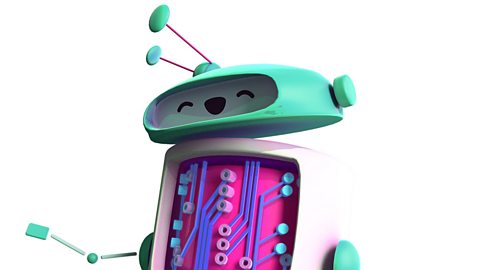
An electrical component is a basic part in a circuit that uses electricity to make something happen. For example a bulb uses electricity to make light.
They are designed to perform specific functions within a circuit.
Some simple components found in circuits include:
- battery cells
- switches
- bulbs
- buzzers
- motors

Power sources
A circuit always starts with a power source. This can be provided either through a mains power supply or by a battery.
Mains power
Mains power arrives at our homes from power stations through underground and overhead cables.
We often use mains supplies for devices that require a lot of power, such as TVs, fridges and cookers. Products using mains power need to be plugged in.
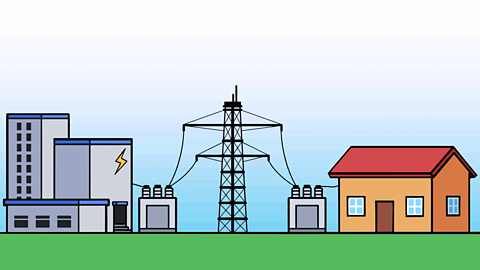
Battery power
Batteries are often used for items that require less power and need to be portable. Portable means you can carry something from place to place.
Batteries are made up of cells. In electrical systems, a cell is a unit that stores chemical energy and converts it into electrical energy.
In a battery cell, the flow of electricityThe movement of tiny particles called electrons through wires, helping to power devices and make things work in electronic circuits. moves from the positive pole to the negative pole of the cell.
The flow is pushed by the cell, around the circuit through the wires to the other components in the circuit.
This bulb and battery cell below are connected together by wires in a complete electrical circuit. This can be shown in a diagram too.
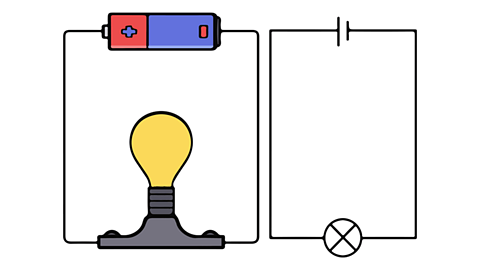
Input devices
An input device is used to control things in a circuit.
Switches
A switch is an input device which breaks a circuit so the flow of electricity stops. The switch can be used anywhere in a circuit to stop the flow of electricity through a component.
When a switch is in the 'on' position, it completes the circuit. This allows electricity to flow around the circuit.
When the switch in the 'off' position, there is now a gap in the circuit. The electricity no longer flows around the circuit.
Take a look at some of the different types of switches that can be used in different products.
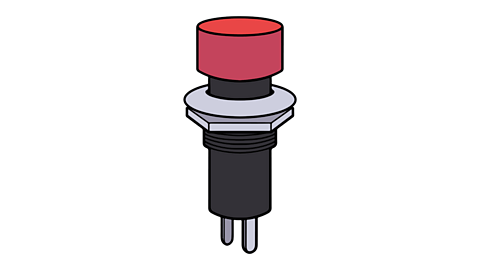
Image caption, Push button
When this push switch is pressed inwards it closes the circuit by allowing the metal connections to meet. This turns the device on. When it is pressed again it releases the connection and breaks the circuit. This turns the device off. It is useful for games and gadgets that need a quick touch to start or stop.
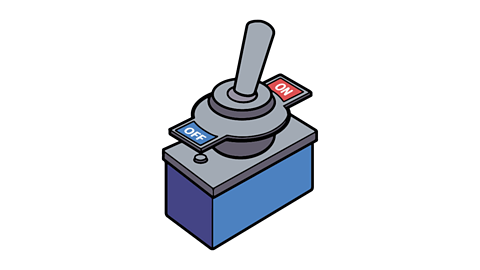
Image caption, Toggle switch
This switch can be flipped up or down. When it's up, it presses the metal connections together, completing the circuit. When it's down, it releases the mechanism and breaks the circuit, turning it off. It is useful to use in products that users want to leave on or off for long periods of time.
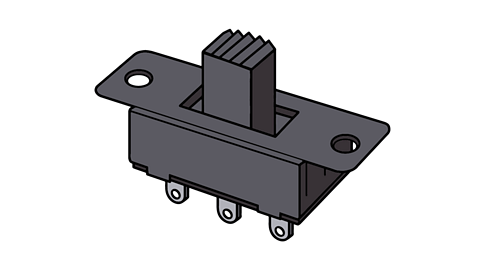
Image caption, Slide switch
This switch contains a slider mechanism. When the user slides it in one direction, the connecting slider turns things on. When the user slides it the other way the slider disconnects, turning the switch off. Similar to a toggle switch, the slide switch is useful for products that need to be kept on or off for long periods of time.
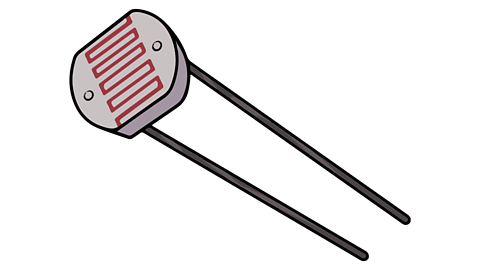
Image caption, Sensor switch
When the light sensor in this light dependent resistor (LDR) detects an increase or decrease in light, it switches the circuit on or off. These switches are useful to use in devices that need to react to a change in light. For example, they can be used to make street lights turn on when it gets dark.
1 of 4

Touch screens
Touch screens, found on products such as smartphones and tablets, allow users to control devices by touching the display.
The device tracks the location and movement of the user’s touch through sensors. The whole screen is an input device.

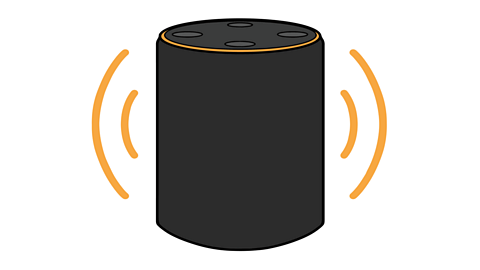
Microphones
Many devices, such as smart speakers or virtual assistants on mobile phones, can be controlled by a person's voice or other sounds.
Microphones and computers can be used together to control a device. A microphone receives the input sound. A small computer is then used to understand the input and make the device carry out the right action.

Output devices
An outputIn an electrical system, an output is the response produced by a system or process after it has received the input. examples of the devices that produce the output are , a lights, motors or buzzers device is anything in a circuit that creates some kind of action.
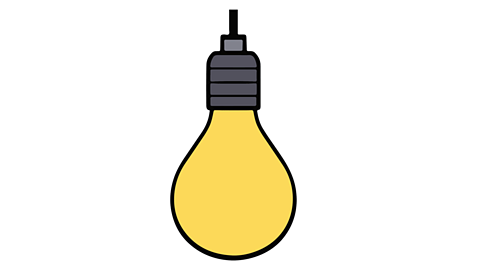
Bulbs
Lightbulbs, or bulbs, are simple output devices that convert electrical energy into light.
Older lightbulbs are made up of a glass bulb filled with a special type of gas. This bulb contains a thin wire called a filament. When the electric current from the circuit passes through the filament, it heats up and gives out light.
Modern energy efficientUsing less electricity to complete a task, saving energy or resources while still completing the task. lightbulbs contain many LEDs which produce light when electricity passes through them.

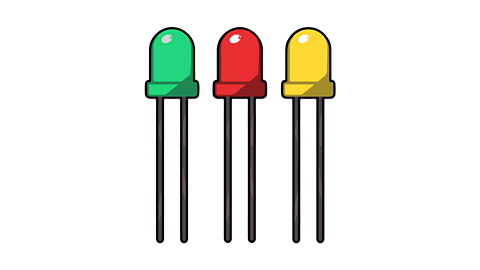
LEDs
LEDs (Light Emitting Diodes) are small energy efficient light sources that emit light when electricity flows through them.
Individual LEDs don't have filaments inside them and they can last much longer than filament bulbs.

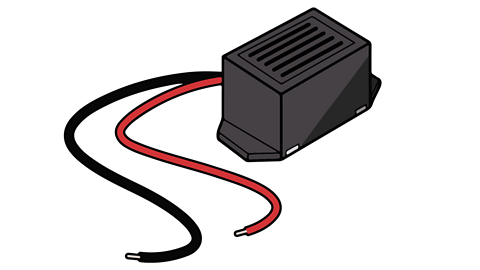
Buzzers and speakers
When electricity passes through a buzzer, a piece of metal inside it vibrates, producing sound.
Buzzers and speakers are commonly used in alarms, timers and electronic games.
Speakers work by changing electrical signals into sound waves.
When electricity passes through a coiled wire and a magnet inside the speaker, it creates a magnetic field which then causes the speaker to vibrate and produce sound.

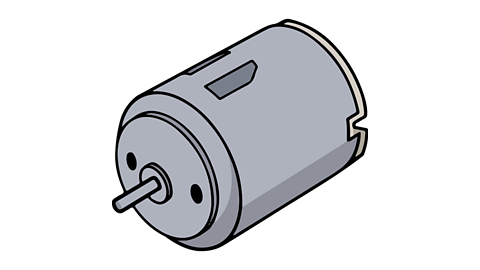
Motors
Motors use electricity and the power of magnetism to create motion.
They are found in vehicles, toys and appliances.

Inputs and outputs in devices
Key words
| Component | An electrical component is a basic part in a circuit that uses electricity to make something happen. For example a bulb uses electricity to make light. |
| Energy efficient | Using less electricity to complete a task, saving energy or resources while still completing the task. |
| Flow of electricity | The movement of tiny particles called electrons through wires, helping to power devices and make things work in electronic circuits. |
| Output | In an electrical system, an output is the response produced by a system or process after it has received the input. Examples of devices that produce an output are lights, motors and buzzers. |
Quiz
Take this quiz to find out what you know about components.
SATs preparation resources. activitySATs preparation resources
Get ready for the SATs papers with videos, activities, quizzes and games to refresh your knowledge and practise your skills.

More on Electrical systems and computer control
Find out more by working through a topic
- count3 of 3
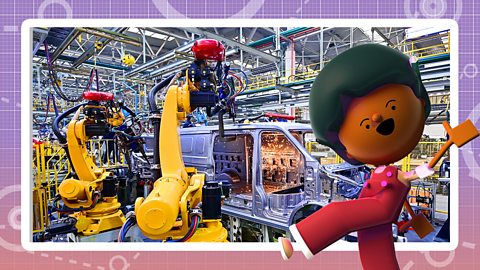
- count1 of 3
